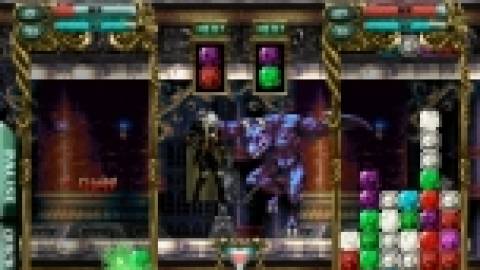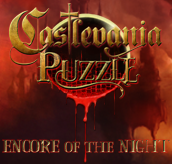Overview
Castevania Puzzle: Encore of the Night is a reinterpretation of the classic Castlevania: Symphony of the Night. In it is adaptation for the iPhone, it has changed from an action-RPG to a puzzle game.Instead of running, jumping and attacking enemies you now progress by choosing a path from one room to another via a map and encountering random enemies which lead to the puzzle battles. As in Symphony of the Night, there are multiple paths through the castle, many of which remain inaccessible until new items or abilities are gained. Battles take place in an adversarial format similar to Super Puzzle Fighter II. Block matching is the main mechanic of the battles, removing enemy health when their screen fills but more damage is inflicted by removing all of their health via automatic attacks which happen when the on screen hourglass turns and also by spells that you can cast. The amount of damage inflicted and received and also which spells you have rely on your equipment and your stats gained by levelling up.
Plot
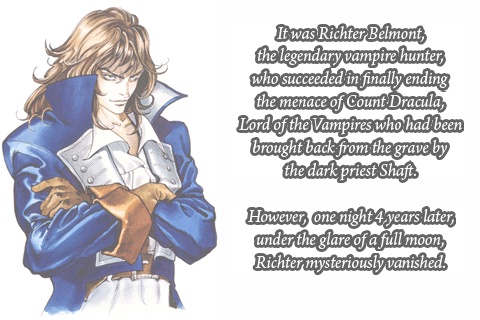
Meanwhile, Alucard wakes up from what was meant to be his eternal rest and discovers that evil is once again spreading and heads to the castle of Dracula to stop it at it's source.
Gameplay

Alucard moves around the map of the castle by moving from one room to another, open paths indicated by blue lines. Red lines indicate an area that you can not yet enter as Alucard does not have the required item or ability yet. Rooms are initially filled in blue until the first time you enter them, when they are filled with the corresponding level graphics from Symphony of the Night.
Spread throughout the castle are safe rooms where Alucard's health is replenished and you have the oppurtunity to buy new equipment and health items. Also, these safe rooms enable you to instantly teleport to any other safe room that you have previously seen. You can instantly teleport to the last used safe room from the menu but you will have to fight your way back to the room you left behind.
Upon entering many rooms for the first time and randomly afterwards, you will enter into combat. Rooms with a red border contain a boss enemy the first time you enter them but are empty afterwards. A brief versus screen appears showing the enemy you will be fighting.
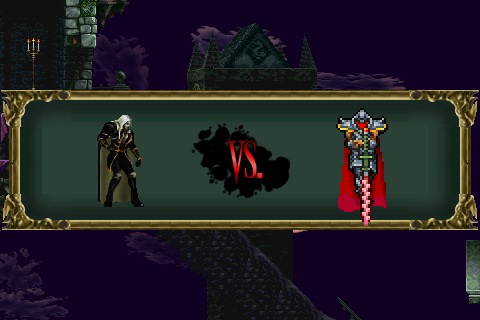
The basic gameplay consists of matching blocks and creating combos to drop inactive blocks on your enemy while doing damage every time the round timer flips. To complicate matters, you and your opponent can also use magic attacks with many different effects including increasing defence and damaging the enemy instantly.
There are four different kinds of blocks in battle.
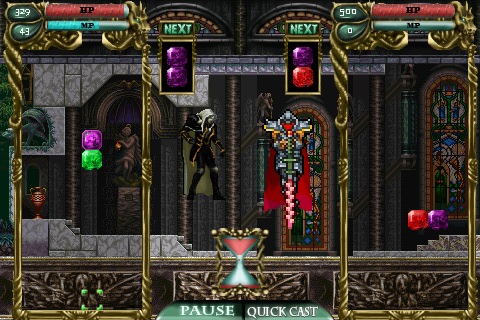
- Regular blocks come in five different colours, one for each affinity of magic. They disappear when three or more of the same regular colour block are matched. Creating combos increases your attack meter and the amount of inactive blocks that are dumped on the enemy.
- Inactive blocks are the same colours as regular blocks but do not disappear, no matter how many are matched. When touching regular blocks are destroyed, inactive blocks are changed into regular blocks. This is great for creating large combos with large amounts of blocks.
- Blood blocks are wild card blocks that will act as a third block to destroy any regular blocks. Also, any inactive blocks which touch a blood block are turned into regular blocks. The frequency that these blocks fall with is affected by some spells and items.
- Item blocks are dropped into the playing field when you use items from the quick cast menu. When matched with any two other regular blocks of the same colour, the item is used, generally to restore health to the player.
If you manage to fill your enemies playfield to the top, the enemy will take damage and a number of their bottom rows of blocks are destroyed.
As the round timer at the bottom of the screen turns over, you and your opponent attack each other, the amount of damage given and received being determined by your stats and equipment and the amount of blocks in play. The more blocks there are, the more damage is taken.
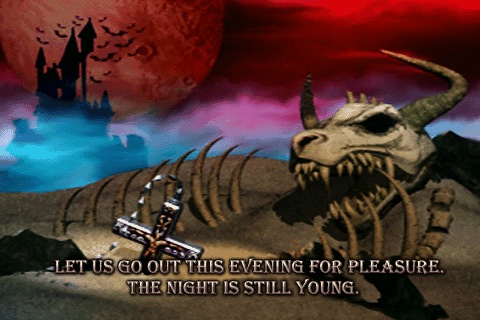
Once the enemy is reduced to 0 HP, the battle is over. You are rewarded with experience points, money and sometimes items or equipment. If your health is reduced to 0, the game is over and you are returned to the menu screen. The game auto saves after every fight and when you enter new rooms so you don't lose much progress.
Once you have gained enough enough experience, you will level up and be given a number of points that can be assigned to your stats. Each attribute is worth a different amount of points depending on how many points you have already spent.
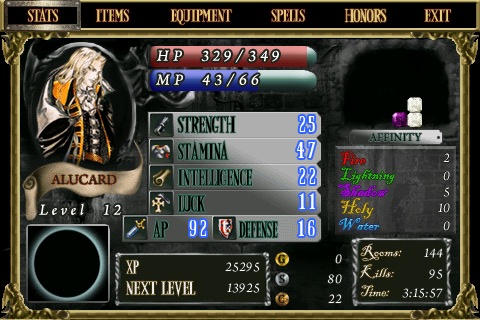
- Strength determines how much damage you do when the round counter flips over.
- Stamina determines how much health you have.
- Intelligence determines how much much MP you have and also how effective your spells are.
- Luck determines the pattern of blocks that land on your opponent and also which blocks you receive, leading to getting more blocks that you have an affinity for.
You can also put points into five different types of magic, the same colours as the regular blocks, to unlock new spells and also to increase your affinity. Your affinity also determines how much each block is worth for attacks and also how often that kind of block appears on your board.
Equipment gained from defeating enemies and also bought in safe rooms, can be equipped from the character menu, increasing your stats. There are different sets of equipment which give you bonuses when all items are equipped.
Honours are challenges which you can complete to gain bonuses, such as extra experience or equipment. The challenges include exploring different amounts of the castle and collecting items sets. Also, you will find playing cards while defeating enemies that give you bonuses when you complete sets such as a Straight or a Flush.

 iPhone
iPhone iPad
iPad Windows Phone
Windows Phone



